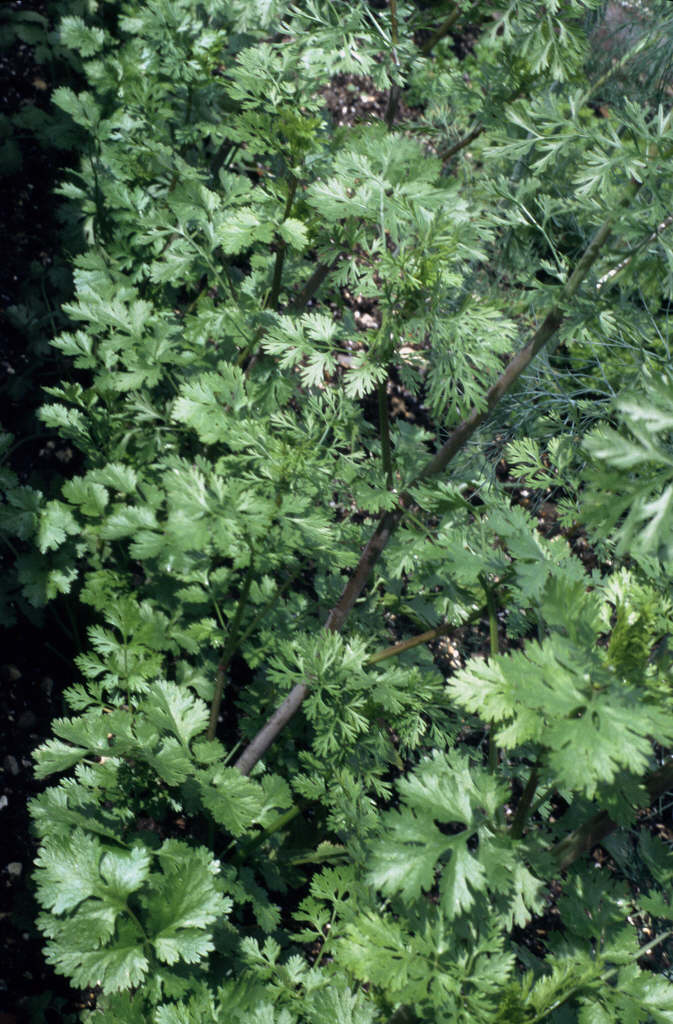Anthriscus cerefolium
chervil
An upright annual herb approximately 60cm tall, cultivated for its aromatic leaves. Aniseed-flavoured, lacy, 2- to 3-pinnate leaves. with ovate leaflets are 3-5 cm large. Umbels of small white flowers, 5-7cm across are borne in summer. Chervil is commonly used to season fish dishes and sauces

Buy this plant
Size
Ultimate height
0.1–0.5 metresTime to ultimate height
1–2 yearsUltimate spread
0.1–0.5 metresGrowing conditions
Moisture
Well–drainedpH
Acid, Alkaline, NeutralColour & scent
| Stem | Flower | Foliage | Fruit | |
| Spring | Green | |||
|---|---|---|---|---|
| Summer | White | Green | ||
| Autumn | ||||
| Winter |
Position
- Full sun
- Partial shade
Aspect
South–facing or West–facing or East–facing
Exposure
Exposed or Sheltered Hardiness
H4Botanical details
- Family
- Apiaceae
- Native to GB / Ireland
- No
- Foliage
- Deciduous
- Habit
- Columnar upright
- Genus
Anthriscus can be annuals, biennials or perennials, with fern-like leaves and umbels of tiny white flowers
- Name status
Correct
- Plant range
- Europe, W Asia
How to grow
Cultivation
Grow in any well-drained soil in sun or partial shade. Water plants in dry spells to deter premature flowering. See chervil cultivation for more advice.
Propagation
Propagate by seed sown in spring and early summer
Suggested planting locations and garden types
- Cottage and informal garden
- Flower borders and beds
Pruning
Harvest leaves regularly to promote new, fresh growth.
Pests
May be susceptible to slugs, snails and caterpillar damage on young growth
Diseases
Generally disease- free
Get involved
The Royal Horticultural Society is the UK’s leading gardening charity. We aim to enrich everyone’s life through plants, and make the UK a greener and more beautiful place.